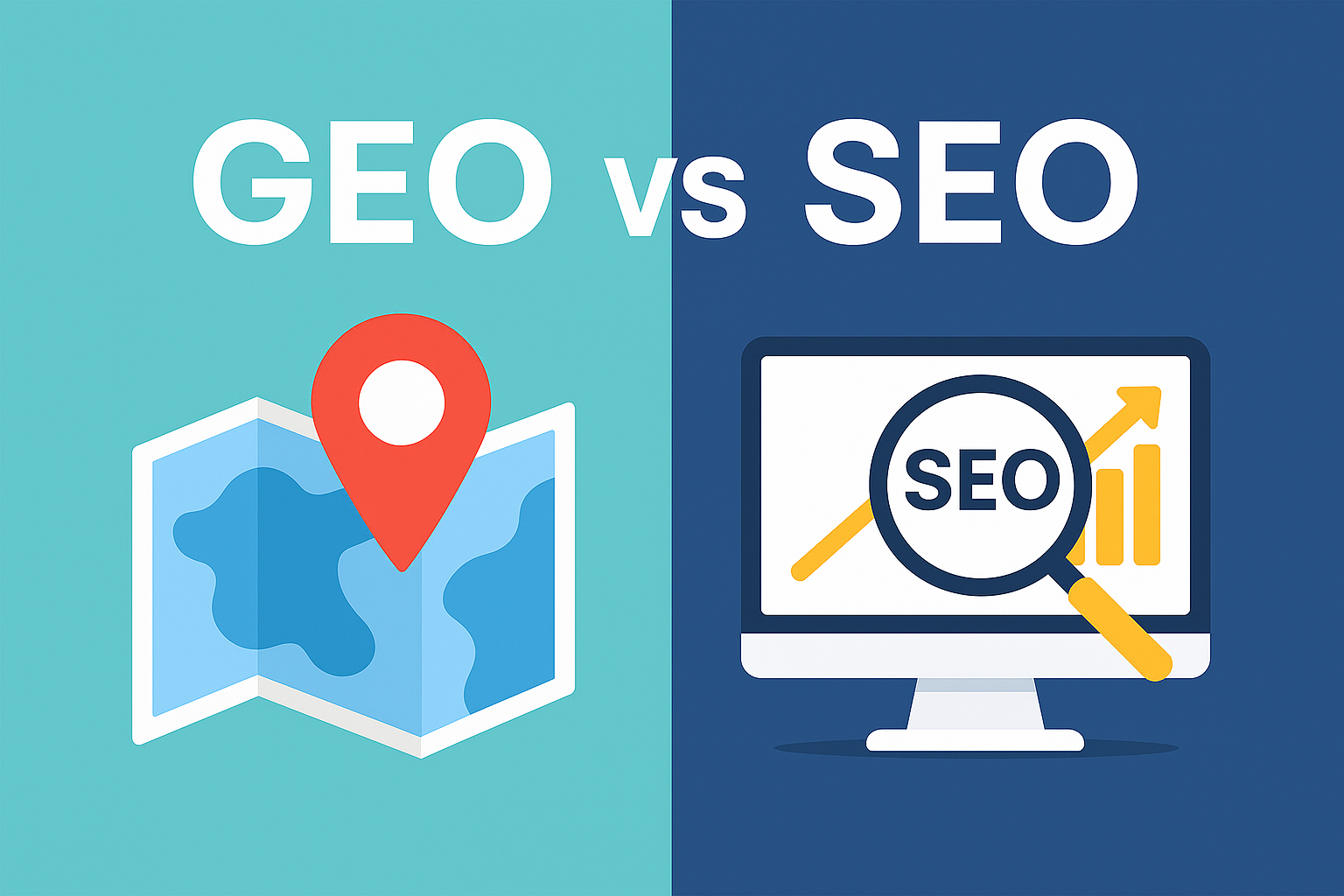What is GEO SEO? A Guide to Generative Engine Optimization

As search engines evolve beyond traditional blue links, a new frontier is emerging: GEO (Generative Engine Optimization).
In a world where AI-generated answers (like Google SGE, Bing Copilot, and ChatGPT) are becoming central to search experiences, the old rules of SEO no longer apply 1-to-1. GEO is the strategy that helps your content appear in AI-driven summaries, citations, and answers.
Let’s dive into what GEO means, how it’s different from traditional SEO, and how you can prepare your site for the future.
What Is GEO (Generative Engine Optimization)?
GEO is the process of optimizing your content for AI-powered search engines that generate direct answers using large language models (LLMs).
Instead of showing a list of 10 blue links, these engines:
Analyze multiple sources
Summarize the answer
Mention or cite content (sometimes with a link)
The goal of GEO is to make sure your content becomes a trusted source for these AI summaries.
SEO vs GEO — What’s the Difference?
| Feature | Feature Traditional SEO | Generative SEO (GEO) |
| Focus | Google/Bing search index | AI |
| Result format | Titles + meta descriptions | Paragraphs + bullet answers |
| Ranking signals | Backlinks, keywords, CTR | Authority, clarity, structure |
| Output | Search snippets | Generated answers |
| Goal | Clicks to website | Inclusion in AI answers |
How to Optimize for GEO
1. Structure Your Content Clearly
Use proper headings (H1–H3) to define sections
Use bullet points and numbered lists to make answers easy to extract
Add FAQs to address user queries directly
2. Answer Questions Directly
Write concise, fact-based responses
Include definitions, how-tos, comparisons
Use clear and simple language
🔍 Example:
Instead of "SEO is important," write:
"SEO (Search Engine Optimization) is the practice of optimizing web pages to improve visibility on search engines like Google."
3. Build Authority and Trust
Cite credible sources
Add author bio and credentials
Use schema markup (especially Article, FAQ, HowTo)
Ensure your domain demonstrates E-E-A-T (Experience, Expertise, Authoritativeness, Trustworthiness)
4. Use Schema Markup
Structured data helps LLMs better understand your content.
Use:
FAQPage for question-answer content
Article with author, datePublished, etc.
HowTo for step-by-step guides
5. Keep Content Updated
AI engines prioritize recent and reliable content.
Refresh your top-performing posts
Add new research or insights regularly
Monitor mentions and citations of your brand or site
🔗 GEO in Practice: Real-World Examples
Your blog post on “How to cancel a subscription” gets featured in Bing Copilot’s answer box.
An FAQ from your site shows up in a ChatGPT plugin response.
Google’s Search Generative Experience (SGE) cites your article in an AI overview.
You didn’t “rank” — but your content was used, quoted, and linked.
That’s GEO in action.
GEO Tools & Tactics
| Tool | Purpose |
| Google Search Console | Monitor visibility in SGE (experimental) |
| Bing Webmaster Tools | Submit structured content for AI indexing |
| Schema.org Validator | Validate your structured data |
| SurferSEO / Frase | Create optimized, factual, scannable content |
| ChatGPT / Gemini | Test how your content performs in LLMs |
Will GEO Replace SEO?
No. It will evolve alongside SEO.
SEO is still essential for visibility, backlinks, and long-term growth. GEO simply ensures your content survives and thrives in AI-driven search environments.
In the near future, success will mean doing both:
Traditional SEO to drive organic clicks
GEO to earn AI citations, brand visibility, and trust signals
Final Takeaway
The future of search is generative — and the time to adapt is now.
To succeed with GEO:
Structure content for clarity
Write for people and machines
Use schema markup strategically
Focus on trust, experience, and value
If your content helps answer real user questions, GEO will reward you with visibility that goes beyond rankings.